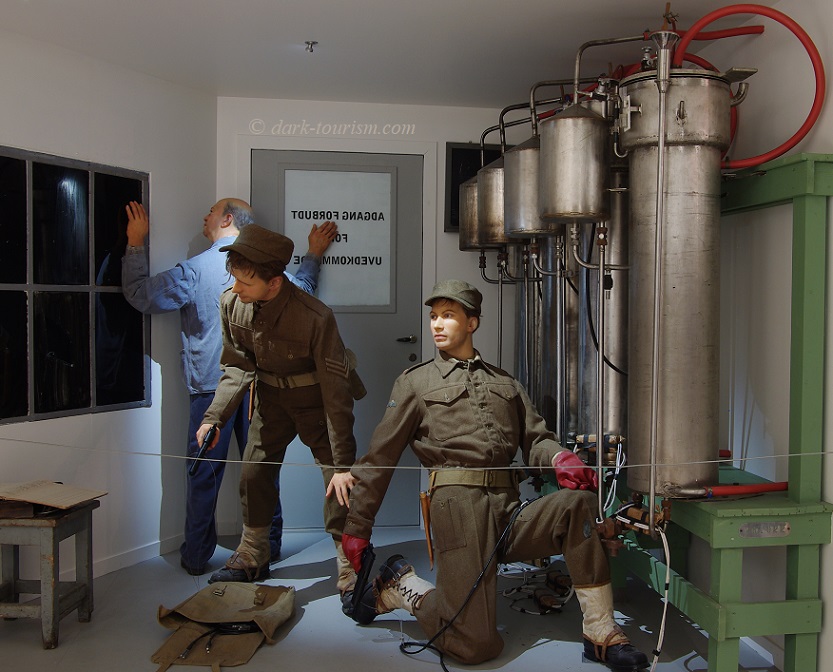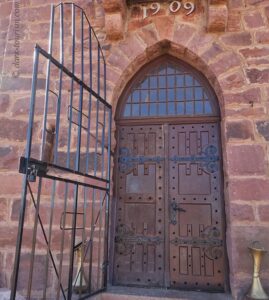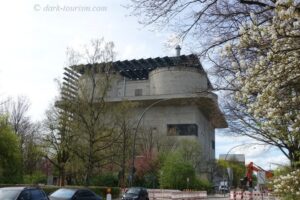Last Friday I received a press release from the NIA (Norsk Industri-Arbeidermuseum – or ‘Norwegian Industrial Workers Museum’) at Vemork near Rjukan in the Telemark region of southern Norway – and immediately decided that this deserves a new Blog post here as well!
I visited Vemork as part of my long Norway (+ Svalbard, Boden and Murmansk) trip in the summer of 2012, so almost ten years ago (how time flies!). Here’s a photo I took of the site from a mountainside opposite the plant:
.
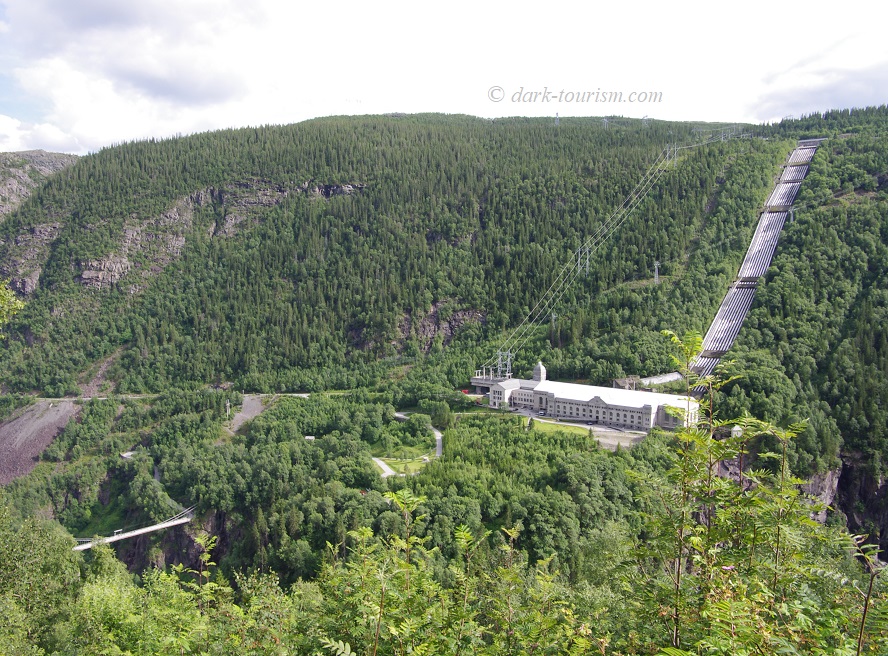
.
When the Vemork hydroelectric power station became operational in 1911/12 it was the largest in the world. It closed in 1971 and was converted into a museum in the late 1980s. Here’s a view of the preserved turbine hall:
.

.
What earns Vemork a place in dark history was not the hydroelectric power generation as such but what some of that energy was used for. In the late 1920s a hydrogen plant was built right in front of the power station. In the mid-1930s it was discovered that so-called ‘heavy water’, containing the rare hydrogen isotope deuterium, which has an extra neutron in its nucleus (making it indeed about 10% heavier than ordinary hydrogen), could be used as a neutron moderator in nuclear reactors. Subsequently, a facility extracting heavy water by means of electrolysis was installed at Vemork, making use of the abundant availability of both water and electricity. Soon this became the world’s foremost heavy-water production plant. Here’s a historic photo of the site, illuminated at night, with the power station barely visible in the background behind the hydrogen plant:
.

.
When Germany invaded Norway in 1940, this heavy-water production facility also fell into the Nazis’ hands. This alarmed the Western Allies as they saw the risk that the heavy-water plant might give the Nazis an advantage in the possible development of an atomic bomb. The spectre of Hitler obtaining such weapons of mass destruction caused the Allies, in particular Britain, to try and foil such a capacity. As the heavy-water production facility was located in the cellar of the hydrogen plant an air strike would have little chance of putting the production out of action, while at the same time risking massive collateral damage and the deaths of innocent Norwegian civilians. So instead a sabotage operation was planned. In February 1942 a group of members of the Norwegian resistance, trained in Britain and with British logistical support, managed to make their way to the Vemork plant, where two of them entered the cellar through a cable tunnel and laid down explosives at the heavy-water production facility. The subsequent explosion did indeed completely destroy it (while causing no harm to people).
When I was at Vemork in 2012, the museum exhibitions included this life-size mock-up of the saboteurs laying down their explosives while, so I presume from the image, holding a plant worker hostage (same photo as the featured one at the top of this post):
.
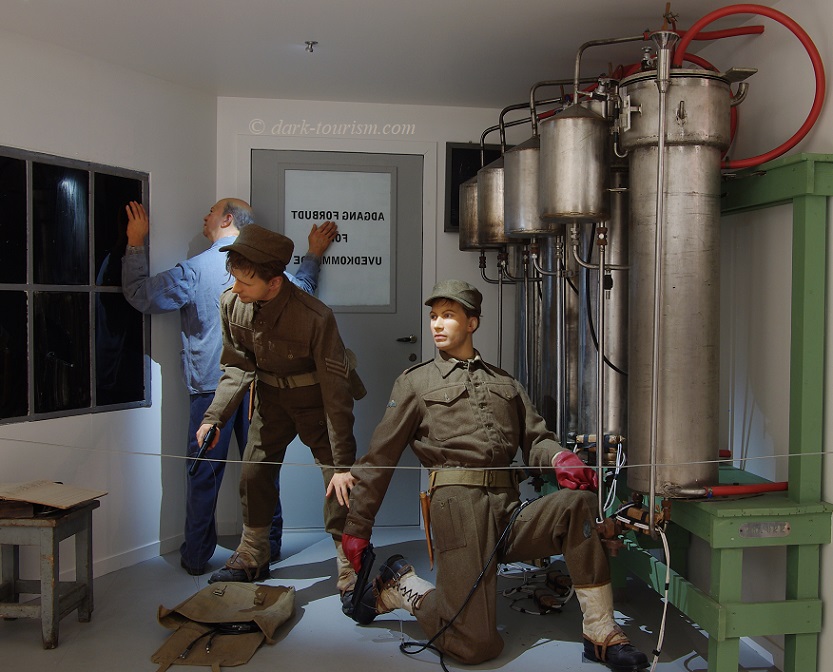
.
After the successful blowing up of the heavy-water plant, subsequent air strikes resulted in further damage and the accumulated stocks of heavy water already produced were eventually also destroyed. Thus Nazi Germany’s possible nuclear capacity was thwarted. Hence this operation is generally regarded as one of the most significant acts of sabotage in history. Or as the museum puts it: it changed the world!
You can read more about this story on my own main website, at the NIA website and also in this illuminating National Geographic article (the latter two are external links that open in new tabs).
The hydrogen plant at Vemork was demolished in 1977, a few years after the power station ceased operations. But here’s the big news from the NIA’s press release:
Apparently since 2017, archaeological digging work has been under way that revealed the very cellar where the key act of sabotage had taken place. This had simply been covered up after the demolition of the above-ground parts of the former hydrogen plant. You can see the cover in this panoramic photo of the site. It’s that sloping grey area right in front of the stone power plant:
.

.
By the way, the suspension bridge over the gorge, the only road access to the plant, is these days also used for bungee jumping! And it was very popular when I was there in 2012 (but I was not tempted to partake).
Here is another, more recent press release photo of the archaeological dig site that laid bare the historic cellar of the heavy-water production facility at Vemork:
.

.
And here’s a press release photo taken inside the historic cellar as it was found – in relatively good condition, all things considered:
.

.
You can even go on a virtual tour of the cellar as it was in that state, namely on this website (external link, opens in a new tab)!
The cellar has meanwhile been integrated into the museum of Vemork, and this new part will open to the public on 18 June 2022.
The cellar will be covered by a new superstructure above it. Here’s an illustration (an ‘artist’s impression’) of what this new part will look like from the outside:
.

.
And finally, here’s another illustration (artist’s impression) showing the new facility in front of the illuminated main power station part seen from further away:

I guess this gives me a reason for a return visit to Vemork at some point. I’ve also been told that parts of the older exhibitions inside the power plant building have undergone some changes too (e.g. that saboteurs mock-up pictured above may no longer be there); so that would be yet another reason to revisit. But when that might be possible I cannot yet say.

